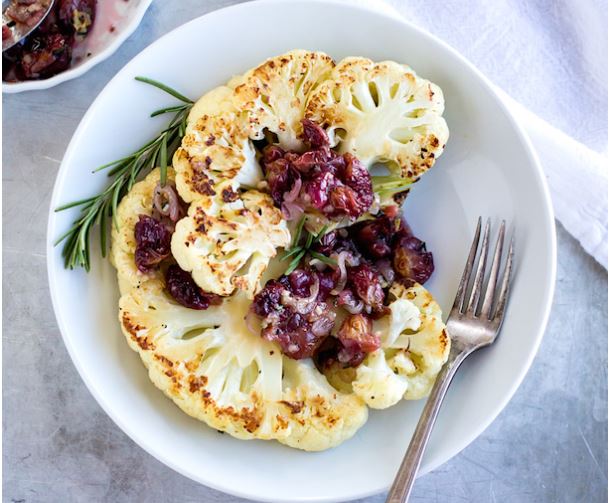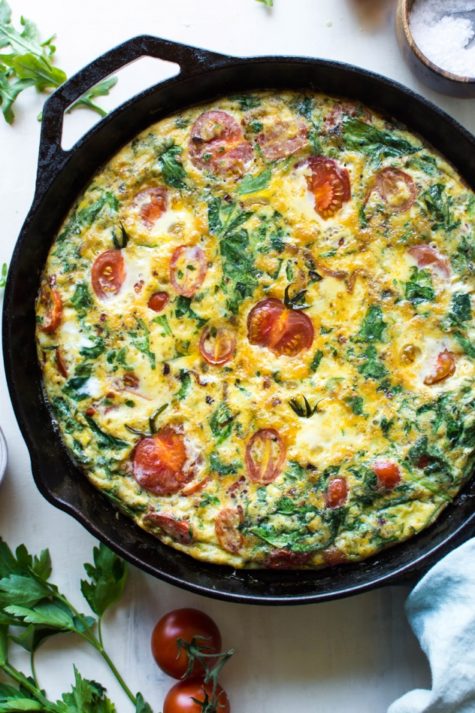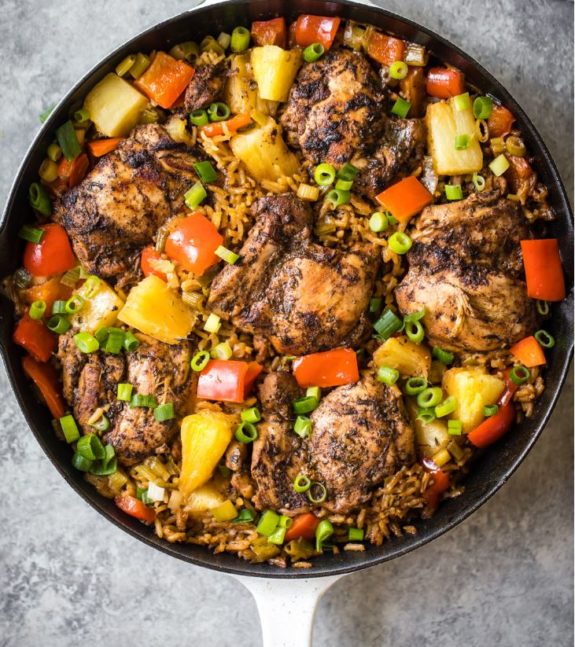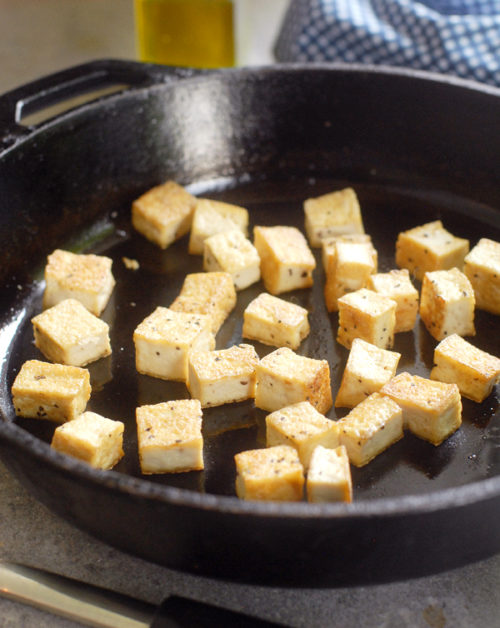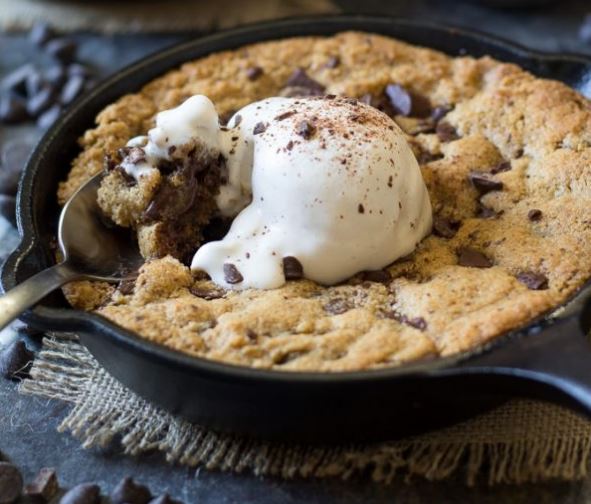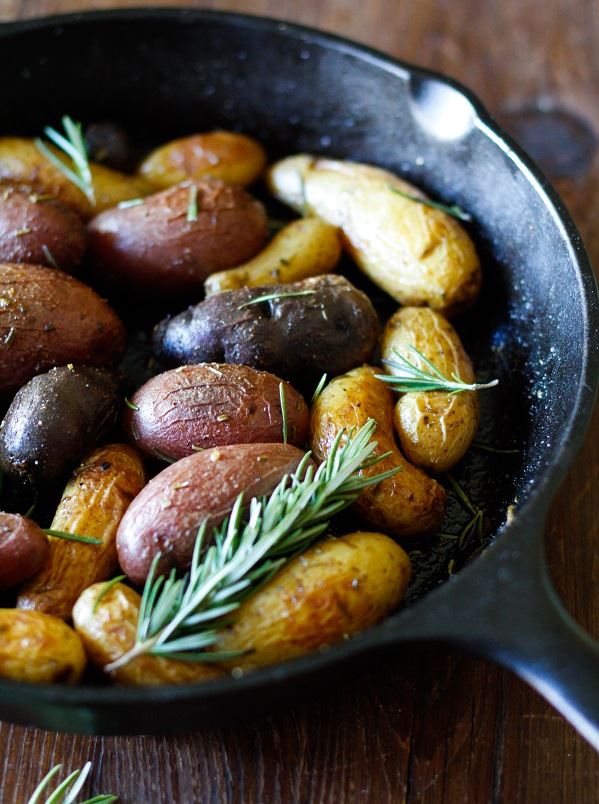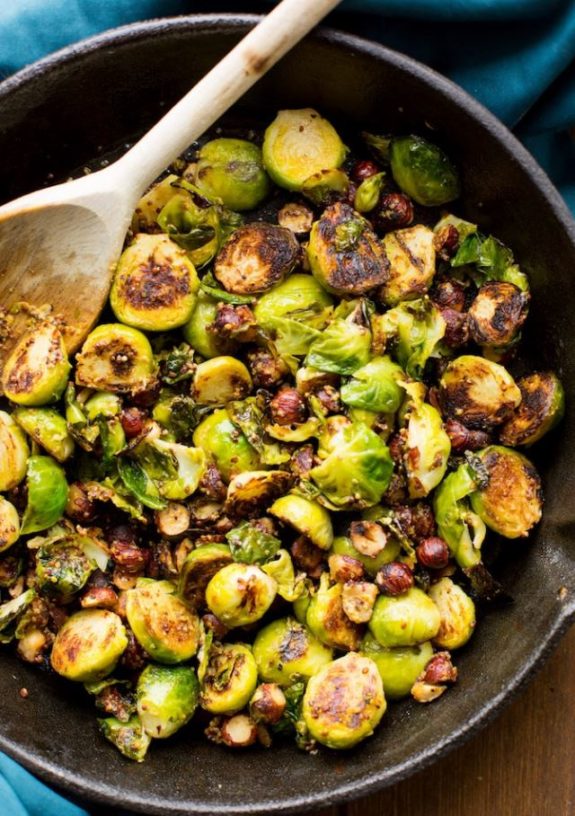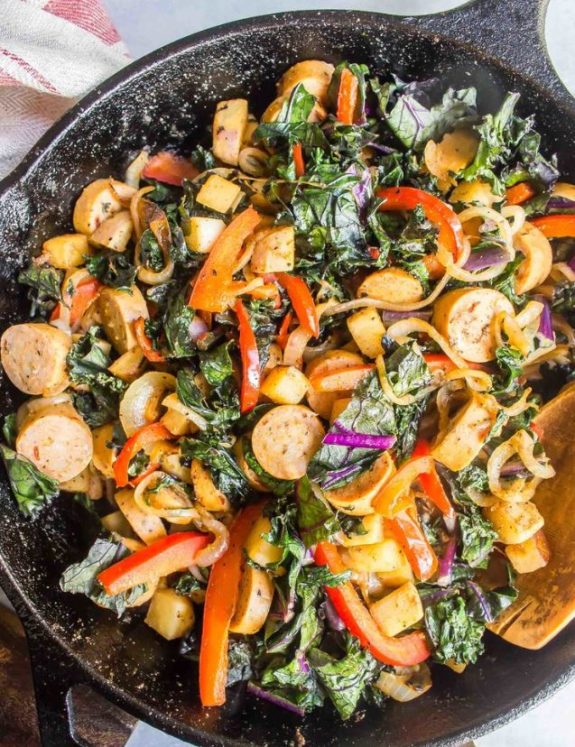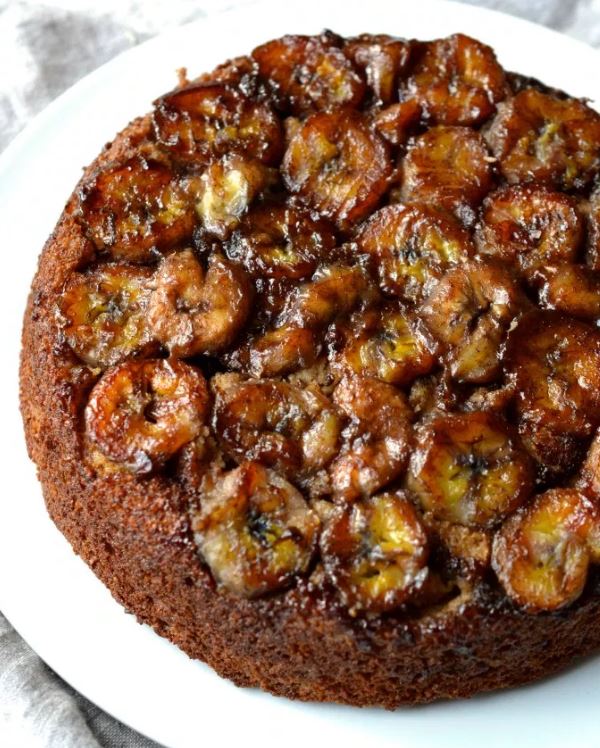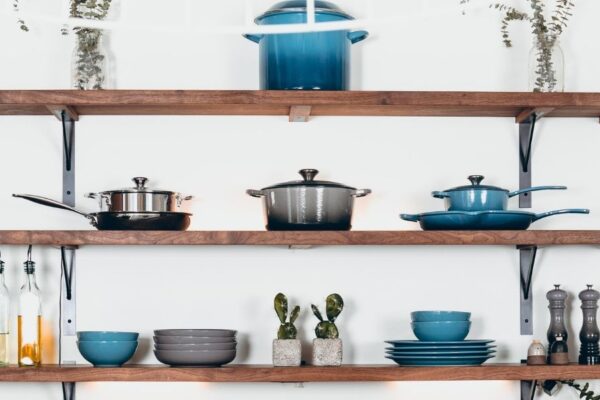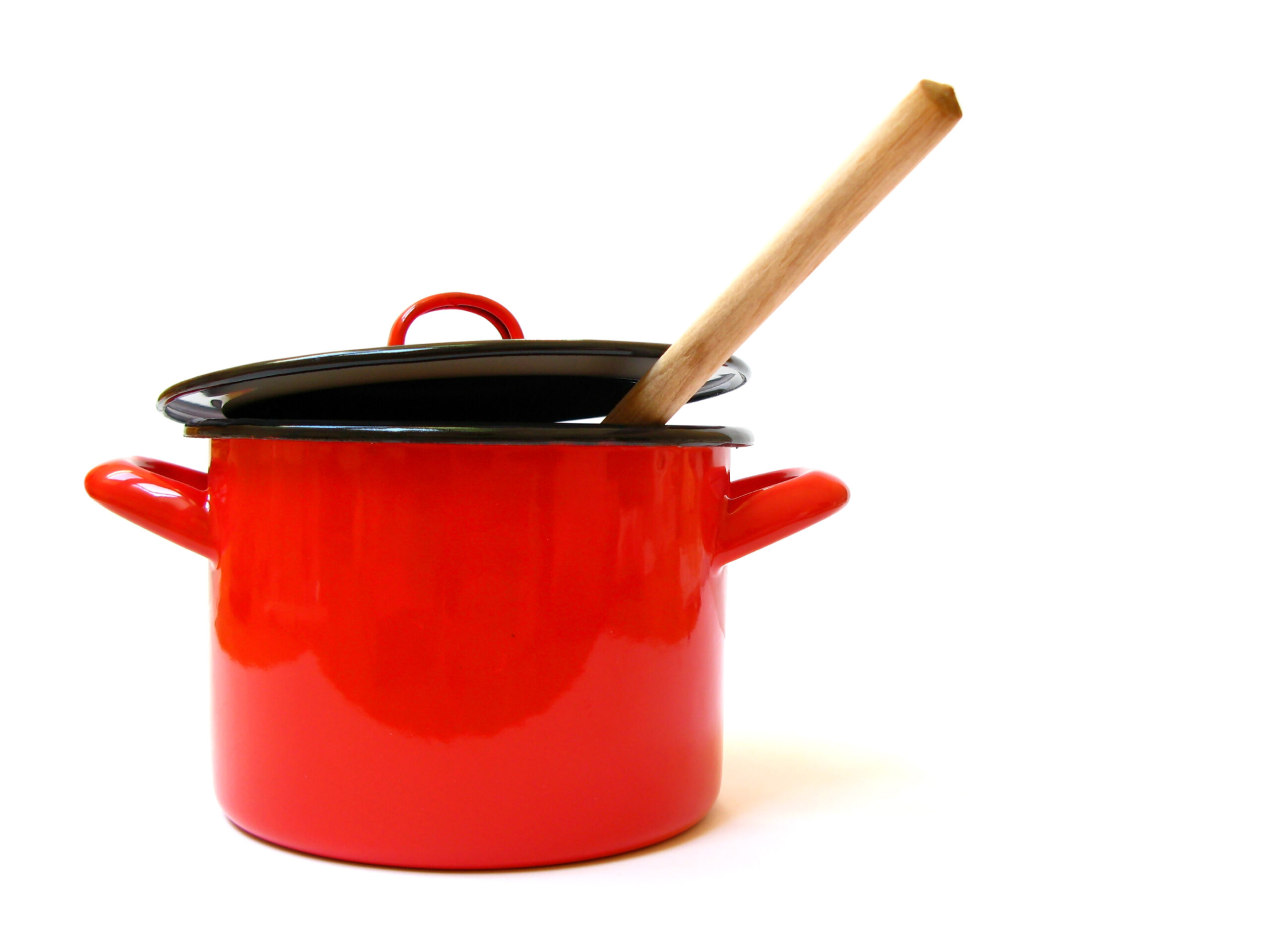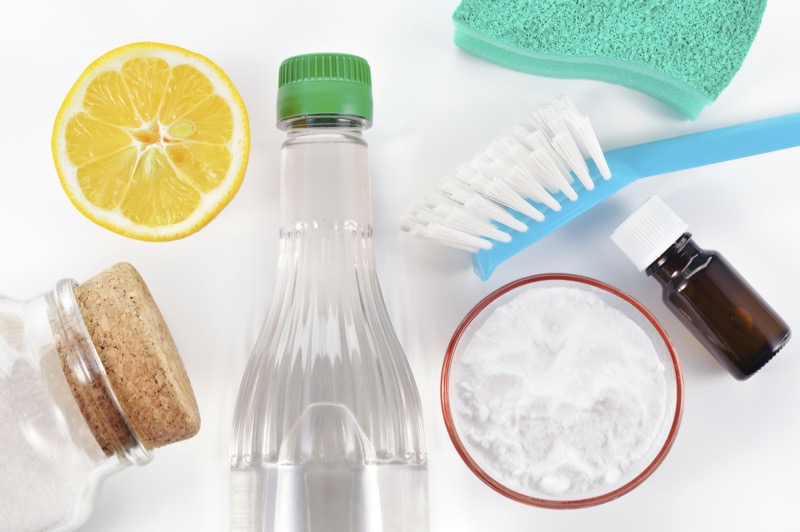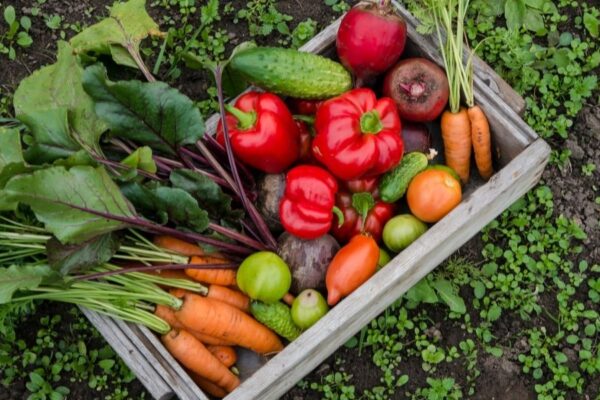Cast Iron Care and Cooking Tips
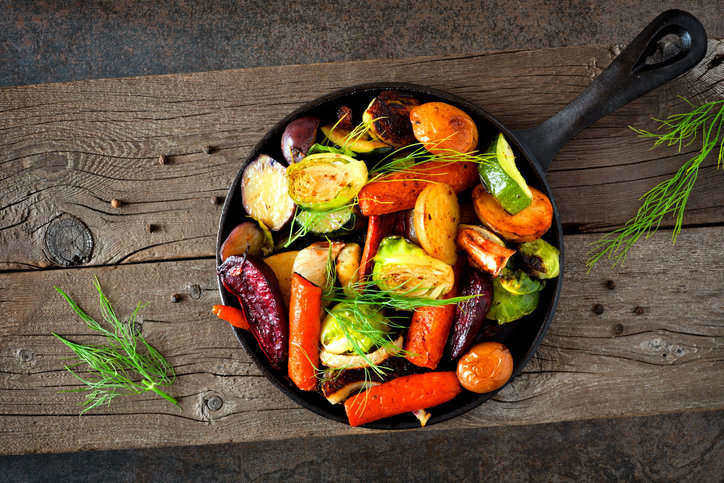
Cast iron cooking is experiencing a renaissance. Once the domain of great-grandparents or thrift stores, cast iron – like other homesteading projects such as fermenting pickles, sprouting, growing your own food or making your own cleaning products – has re-emerged in many household kitchens to become an essential cooking tool.
Known for its sturdiness and ability to handle high heats, cast iron cookware was widely used throughout North America and Europe until the middle of the 20th century, when non-stick Teflon pans became the norm. Unfortunately, Teflon cookware contains the chemicals polytetrafluoroethylene (PFTE) and perfluorooctanoic acid (PFOA), which can be ingested and inhaled when cooking. They are potential cancer-causing substances, may give you flu-like symptoms and can even be found in human breast milk.
Many people are intimidated by cooking with cast iron, but with these care and cooking tips you’ll be a ‘seasoned’ cast iron pro in no time.
Why Cook With Cast Iron?
Cast iron is an alloy of iron with a small percentage of carbon, silicon and manganese. Cast iron skillets are well loved because they’re:
- Very durable
- Affordable (especially if you snag one that’s been passed down in your family)
- Able to retain heat well
- Able to handle high heats
- Free of chemicals such as PFTE and PFOA
- Easy to transition from stovetop to oven to table (they’re great for one-pot meals!)
- Simple to clean and season
- May help reduce iron deficiency anemia in adults and children
Getting Started: Seasoning Your Cast Iron Pan
Cast iron must be properly seasoned before you use it. The process of heating oil in your pan, called fat polymerization, helps to create a layer that is non-stick and protects the pan from food and air. Some brands will come pre-seasoned; however, we’ve found that pans and skillets will still need seasoning or else you’ll end up with bits of food stuck to the pan.
To season your cast iron pan:
Oven Method
- Preheat the oven to 350 degrees.
- Wash the pan and then dry it well.
- Coat the skillet or pan with oil. Many cooks and experts recommend vegetable oil or flaxseed oil. However, vegetable oils like canola aren’t beneficial to our health, and flaxseed is very susceptible to heat, light and air, meaning it will oxidize and create free radicals in the body. You can read more about the best cooking oils and what temperatures to use them at here. We prefer to use a stable high-heat oil like avocado oil or an animal fat for seasoning.
- Put the pan upside down on the rack in the oven. Put a baking sheet underneath to catch any drips.
- Bake for 1 hour, then allow the pan to cool in the oven.
Stovetop/Burner Method
- Wash the pan and then dry it well.
- Coat the skillet or pan with oil. (See above for oil suggestions.)
- Bring the burner up to high heat – this will probably take several minutes. Once the pan is hot, turn the heat down to medium and let it sit on the burner for 10 minutes. Turn on your oven fan or open a few windows, as it may get smoky!
- Allow the pan to cool, then wipe off any excess oil.
- You may need to repeat this process a couple of times.
Cast Iron Cooking Tips
Cast iron can take some adjustment at first, especially if you are accustomed to using Teflon-coated non-stick pans. However, after a few uses you’ll get the hang of it.
Some things to keep in mind:
- It will become more non-stick over time. Cast iron skillets aren’t the same as traditional non-stick surfaces; however, the non-stickiness (a very technical term) will increase with repeated use and seasoning. The first time you use it, perhaps try something simpler like a stir-fry rather than your favourite pancake recipe and test the waters.
- The entire pan gets hot! With most pans or skillets, the handle is cast iron too and it will get very hot if you touch it. Either use an oven mitt, or purchase a handle cover.
- Be generous with cooking oils. Again, ensure you use heat-safe and healthy oils.
- Re-season after every use. If you want to maintain and build the effectiveness of cast iron, you’ll need to re-season it after every use. More on that in the section below!
- Have fun and experiment. You can cook a variety of foods in cast iron skillets – meats, tofu, tempeh, burgers, vegetables, eggs and beans. It’s also great for toasting spices or nuts and seeds and you can even make gluten-free baked goods in it, too.
- Avoid cooking with acidic foods for long periods of time. The acidity of tomatoes, citrus fruits and vinegars break down the seasoning coating you create every time you use your pan. If you need to add a squeeze of lemon at the end of cooking or throw in a few tomatoes, that’s fine, but something like a slow-cooked chili or tomato sauce is probably better off in another type of pan or your slow cooker.
Caring For Cast Iron
Keep your cast iron in good shape by cleaning it properly after every use.
1. Cleaning
There is some debate about the best method to clean a cast iron skillet, but we’ve always had success using a natural, non-toxic dish soap and warm water. If there are any stubborn bits of food stuck, a scrub brush will usually do the trick.
As cast iron rusts easily, this is not the type of pan you can leave to soak for hours on end. Once the pan has cooled completely (this can take an hour or two, depending on what temperature you cooked it at), wash it thoroughly.
2. Drying
Air-drying can lead to rust, so dry your skillet well after washing with a kitchen towel.
3. Oiling/Re-Seasoning
Cast iron needs re-seasoning after every use. You don’t need to bake it in the oven or on the stovetop like with the first seasoning – simply add a little bit of oil into the pan and rub it in, either using a paper towel or a reusable oil brush. Put the pan away and it’s ready for your next meal!
What to Make In Your Cast Iron
The seasoning and re-seasoning process might seem complicated, but it’s actually very easy. And with delicious recipes like these, you’ll be inspired to get cooking with cast iron!
Cauliflower Steaks with Rosemary Roasted Grape Chutney
Cauliflower Steaks with Rosemary Roasted Grape Chutney by Heartbeet Kitchen
A cast iron skillet cooks cauliflower steaks quickly and gives them a great char.
Frittata With Tomatoes + Fresh Herbs
Frittata With Tomatoes + Fresh Herbs by Nyssa’s Kitchen
A flexible Paleo recipe that starts off on the stovetop and is finished in the oven. Super easy!
One Pan Caribbean Jerk Chicken With Pineapple Coconut Rice
One Pan Caribbean Jerk Chicken With Pineapple Coconut Rice by Ambitious Kitchen
An easy one-pan meal that is great for meal prep.
Easy Pan-Fried Crispy Tofu
Easy Pan-Fried Crispy Tofu by Allison’s Allspice
All of the secret tricks you need to create delicious + crispy tofu.
Paleo Chocolate Chip Skillet Cookies
Paleo Chocolate Chip Skillet Cookies by Paleo Running Momma
See, we told you that cast iron could be used for baking. And we highly recommend topping these cookies with some dairy-free ice cream.
Rosemary Roasted Fingerling Potatoes
Rosemary Roasted Fingerling Potatoes by The Roasted Root
A simple and elegant side dish to any entrée.
Sautéed Brussels Sprouts with Mustard and Hazelnuts
Sautéed Brussels Sprouts with Mustard and Hazelnuts by A Saucy Kitchen
The cast iron skillet lends that crispy outer crust to the sprouts that will turn guests from Brussels sprouts haters into fanatics.
Keto Hash with Kielbasa
Keto Hash with Kielbasa by Cast Iron Keto
A very easy recipe for cast iron newbies!
Upside Down Skillet Banana Bread
Upside Down Skillet Banana Bread by Every Last Bite
In this Paleo recipe, the bananas are caramelized in the bottom of the skillet before the rest of the batter is poured in and cooked in the oven. Very fancy!
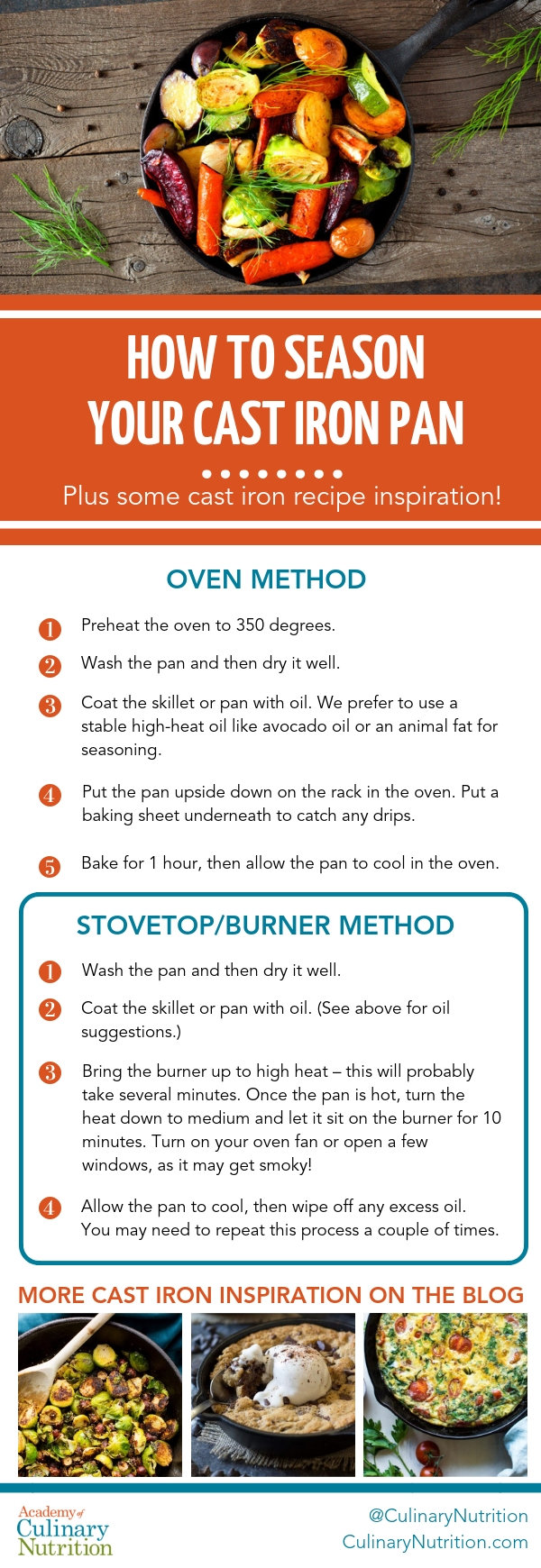
Free Resource Library
Enjoy more than 40 downloadable guides, recipes, and resources.















